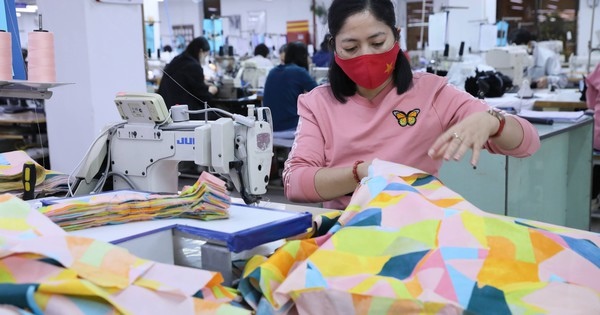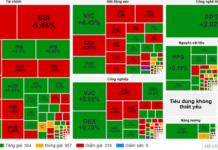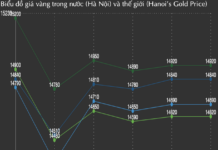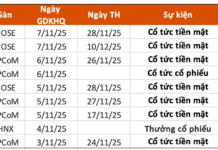Vietnam’s textile and garment exports rebounded in the first quarter of 2024 after a challenging year in 2023.
Major markets grow steadily
According to the Ministry of Industry and Trade, textile and garment exports reached $3.25 billion in March 2024 alone, up 1.5% year-on-year. For the first quarter of 2024, total exports reached $9.5 billion, a 9.6% increase compared to the same period in 2023.
All of Vietnam’s major textile and garment export markets have shown positive growth. Exports to the U.S. reached $3.42 billion, up 8.6% year-on-year; exports to the European Union reached $855 million, up 3.2%; and exports to Japan maintained a strong growth momentum, reaching $1.02 billion, up 10.1%.
Mr. Than Duc Viet, General Director of May 10 Corporation, said that the company’s total revenue in the first three months of the year reached 1,128 billion VND, up 24.41% compared to the same period in 2023, and exceeded 25.07% of the 2024 plan. Export revenue reached 1,020 billion VND, while domestic revenue reached over 73.1 billion VND, up 3% year-on-year.
Emphasizing the positive signals in the market, Mr. Le Tien Truong, Chairman of the Board of Directors of the Vietnam National Textile and Garment Group (Vinatex), said that many of the group’s member companies have received orders that will last until the middle of this year. According to him, the textile and garment industry is expecting a successful year as inflation gradually decreases and purchasing power improves in key markets.
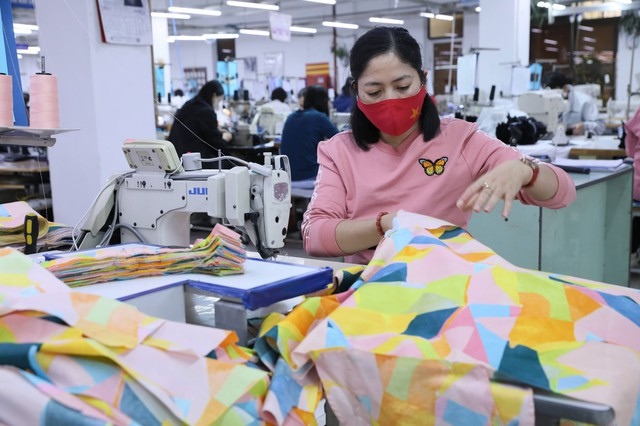
Textile and garment exports have been a bright spot in the first months of 2024. Photo: MINH PHONG |
According to Mr. Vu Duc Giang, Chairman of the Vietnam Textile and Apparel Association (Vitas), demand in major export markets and production in enterprises have improved compared to the same period last year. Global demand for garments has increased. The majority of domestic textile and garment companies have secured orders until the end of the second quarter of 2024, and some have even received orders for the third quarter.
Mr. Giang noted another important signal: many retail corporations in member countries of free trade agreements (FTAs) such as Canada, Australia, and Europe have visited Vietnam to find supply chains with competitive costs. “Global textile and garment manufacturers and supply chains continue to choose Vietnam as a production and sourcing destination,” Mr. Giang said.
While the global economy is expected to face many challenges and difficulties in 2024, the Vietnamese textile and garment industry is determined to achieve its export target of $44 billion, a 9.2% increase compared to 2023. Assessing the challenges facing the textile and garment industry in the near future, Dr. Can Van Luc, a member of the National Monetary and Financial Policy Advisory Council, said that order difficulties persist, the market recovery is slow, and input costs remain high. In addition, supply chains remain vulnerable, and the trend toward green, circular production is setting stricter requirements for exported goods.
Challenges and uncertainties abound
In the first months of 2024, the textile and garment industry recorded many positive signals in terms of orders and market demand. However, businesses are still facing many challenges and difficulties, as the conflict in the Red Sea continues, Russia-Ukraine tensions persist, and trade wars between countries become more complex. For the textile and garment industry, the pressure on shipping costs is particularly high due to the tensions in the Red Sea.
May 10 Corporation General Director Than Duc Viet expressed concern that the situation in the Red Sea is causing shipping costs to increase, reducing the profitability of businesses. In this context, he said that the company has implemented many solutions to overcome the difficulties, such as tapping into domestic and international markets, diversifying products and customers, and researching and developing new products and materials.
The Ministry of Industry and Trade also assessed that the global economy is entering a new period with many risks, challenges, and uncertainties. The economic growth of the world and of countries in Europe and the Americas is projected to be lower in 2024 than in 2023. The geopolitical conflict continues to prolong and escalate, with the risk of spreading and affecting Vietnam’s exports. In addition, countries are paying more attention to issues related to sustainable development, climate change mitigation, and consumer safety, which is leading to the establishment of stricter new standards and regulations for supply chains, raw materials, labor, and the environment.
“Countries are diversifying their sources of supply, focusing on partners that are close to the market and comparable to Vietnam, such as Turkey, Mexico, India, Indonesia, and Bangladesh. This will intensify competition in Vietnam’s export markets,” the Ministry of Industry and Trade noted.
Vitas Chairman Vu Duc Giang also acknowledged that the textile and garment industry faces many pressures, including labor issues. To overcome these difficulties and achieve the export target, Mr. Giang said that companies in the industry need to diversify their markets, products, and customers.
In addition, according to Mr. Giang, it is necessary to invest in developing science and technology and human resources. In particular, businesses must take proactive steps to address the green transition, adjust production processes, and invest in new technologies to maintain competitiveness and meet the demands of the global supply chain.
To promote exports in general and textile and garment exports in particular, the Ministry of Industry and Trade advised that businesses need to closely monitor market developments and policy changes in partner countries. From there, they can propose appropriate solutions and develop diverse traditional and new export markets.
|
The Ministry of Industry and Trade said that it will ask the Vietnamese Trade Office system in various regions to regularly update information on foreign market conditions, regulations, standards, and requirements that may affect Vietnam’s import and export activities, and to make recommendations to local authorities, associations, and import and export businesses. In addition, the agency will support businesses in effectively exploiting FTAs to diversify their markets, supply chains, and export activities. |
MINH CHIEN
